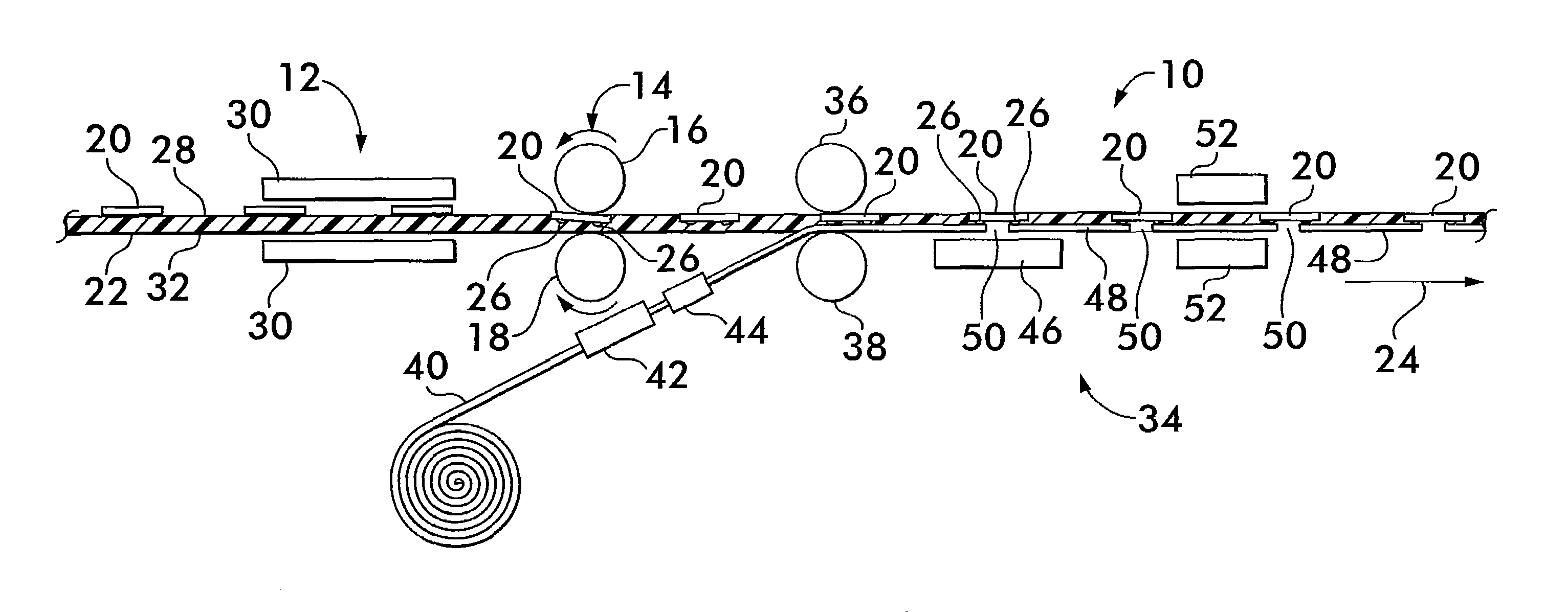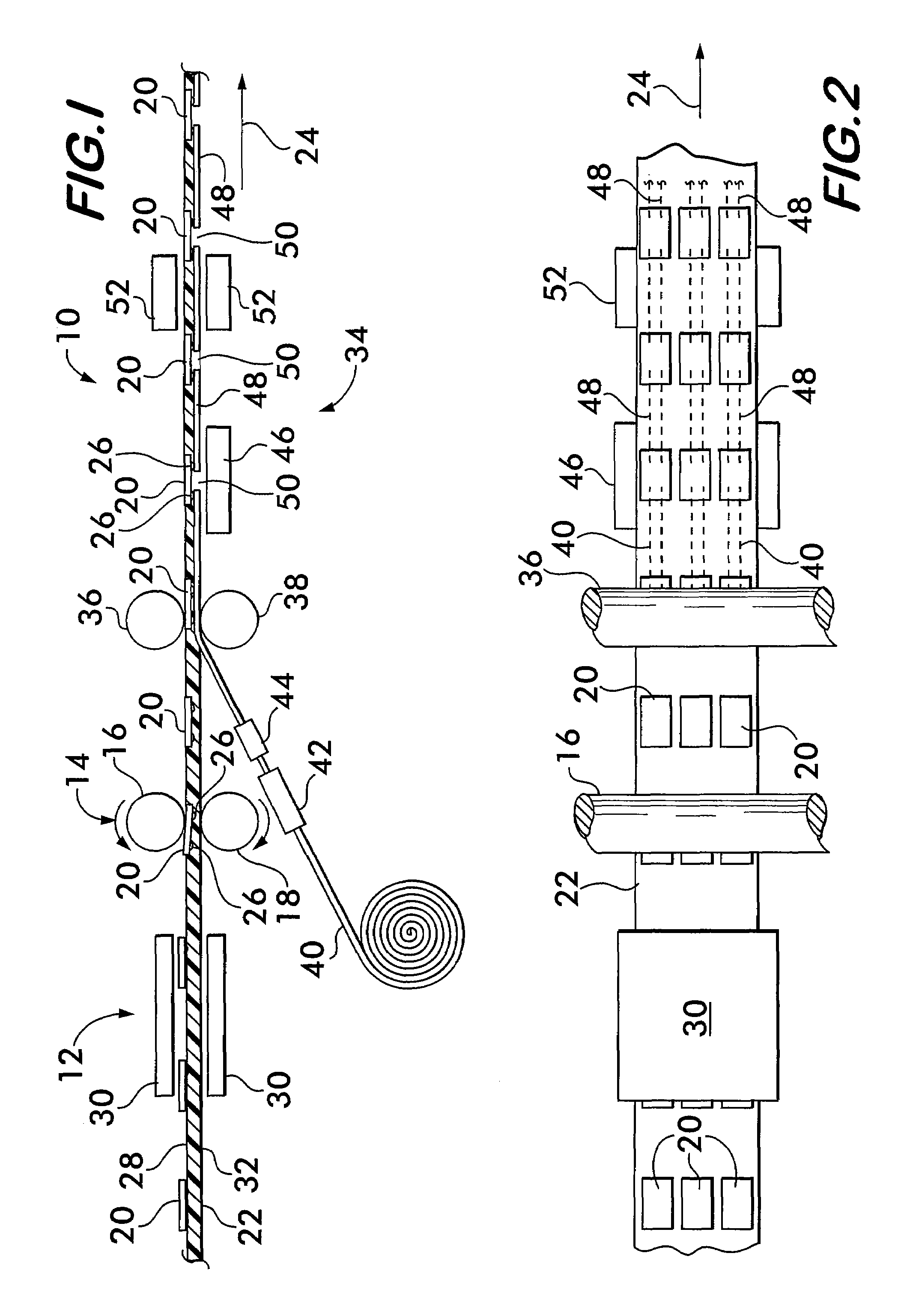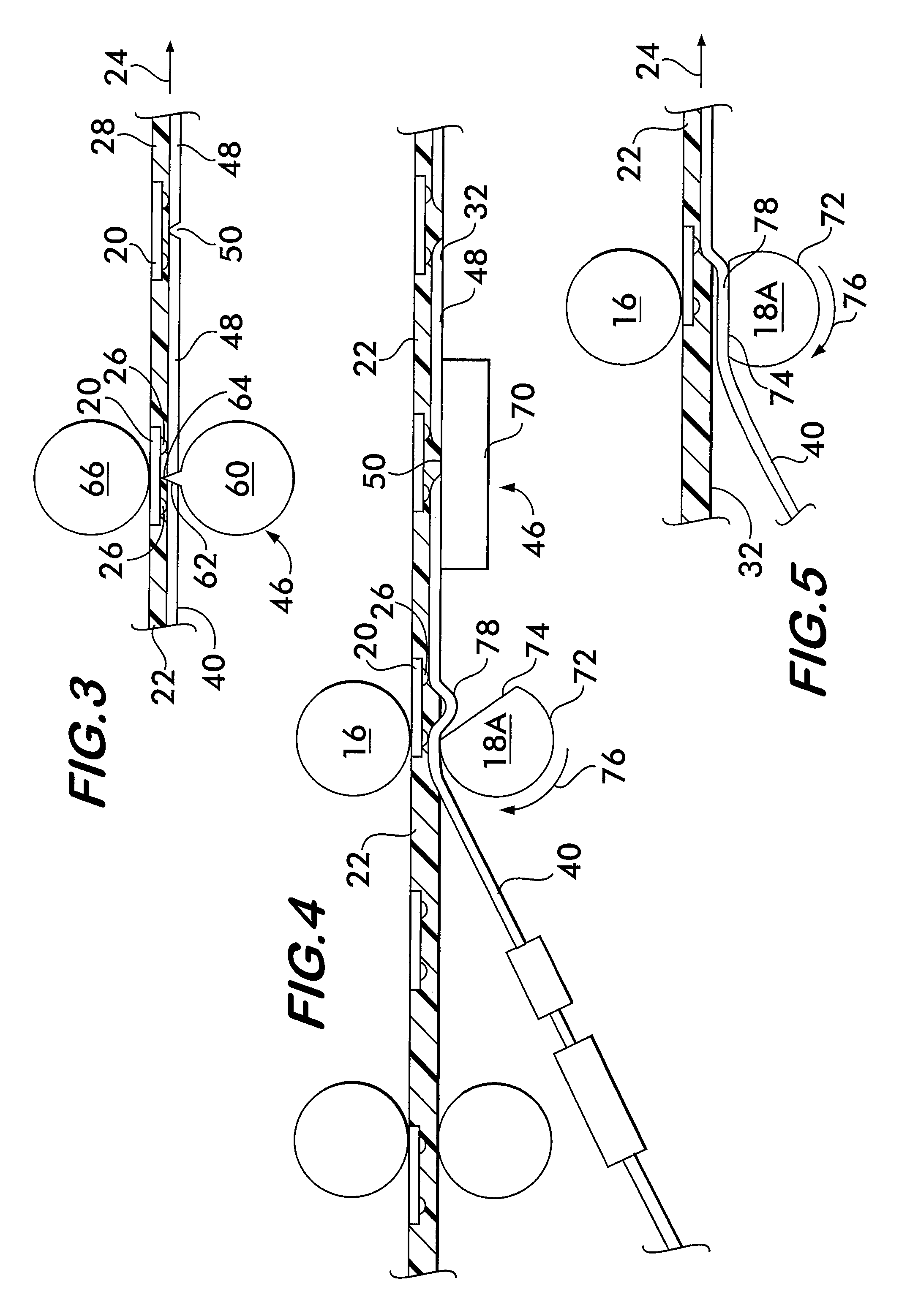Device for making an in-mold circuit
a technology of in-mold circuit and device, which is applied in the field of communication devices, can solve the problems of insufficient cost reduction, insufficient cost reduction, and mechanical process of chip bonding, and achieve the effect of slowing down and reducing throughpu
- Summary
- Abstract
- Description
- Claims
- Application Information
AI Technical Summary
Benefits of technology
Problems solved by technology
Method used
Image
Examples
Embodiment Construction
[0052]An exemplary embodiment for an in-mold chip strap and approach for making an in-mold strip is shown in FIGS. 1 and 2. As can best be seen in the side sectional view of FIG. 1, a manufacturing device 10 for making an embedded chip strap includes a heater 12 and a rotary station 14 having two rollers 16 and 18 that embeds chips 20 into a layer of poly (e.g., polymer, polyester, polyurethane, polystyrene, PVC), also referred to as a poly sheet 22, moving continuously in a machine direction 24. The poly sheet 22 includes a first layer or side (e.g., top side 28) and a second layer or side (e.g., bottom side 32) opposite the first layer or side. In this embodiment, the chips 20 are placed onto the poly sheet 22 before the poly sheet is heated by the heater 12 to just below its glass thermal temperature. However, the scope of the invention is not limited to this order, as the poly sheet 22 could also be heated to just below its glass thermal temperature before or while the chips 20 ...
PUM
| Property | Measurement | Unit |
|---|---|---|
| size | aaaaa | aaaaa |
| depth | aaaaa | aaaaa |
| depth | aaaaa | aaaaa |
Abstract
Description
Claims
Application Information
 Login to View More
Login to View More - R&D
- Intellectual Property
- Life Sciences
- Materials
- Tech Scout
- Unparalleled Data Quality
- Higher Quality Content
- 60% Fewer Hallucinations
Browse by: Latest US Patents, China's latest patents, Technical Efficacy Thesaurus, Application Domain, Technology Topic, Popular Technical Reports.
© 2025 PatSnap. All rights reserved.Legal|Privacy policy|Modern Slavery Act Transparency Statement|Sitemap|About US| Contact US: help@patsnap.com



